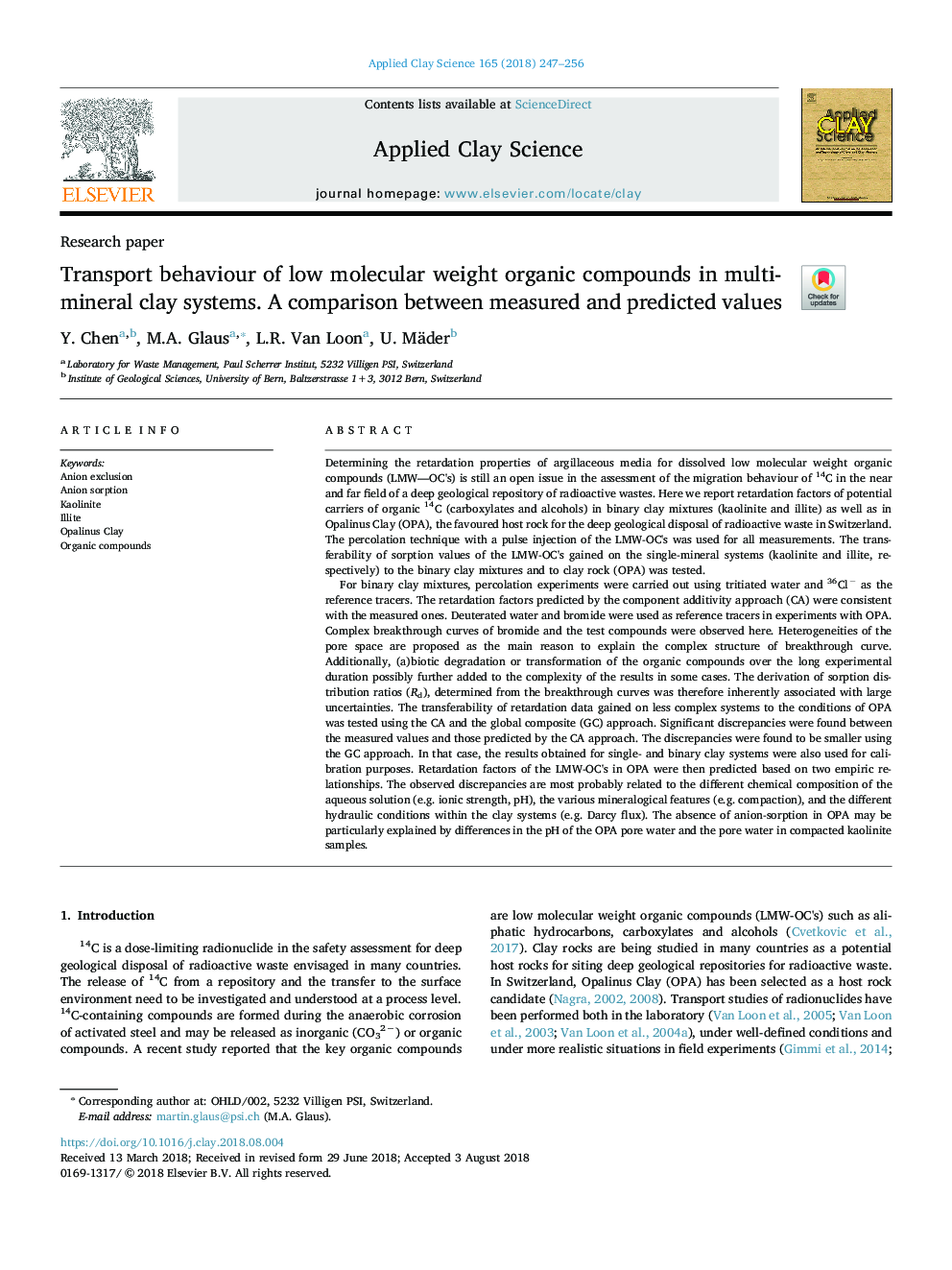| Article ID | Journal | Published Year | Pages | File Type |
|---|---|---|---|---|
| 11007142 | Applied Clay Science | 2018 | 10 Pages |
Abstract
For binary clay mixtures, percolation experiments were carried out using tritiated water and 36Clâ as the reference tracers. The retardation factors predicted by the component additivity approach (CA) were consistent with the measured ones. Deuterated water and bromide were used as reference tracers in experiments with OPA. Complex breakthrough curves of bromide and the test compounds were observed here. Heterogeneities of the pore space are proposed as the main reason to explain the complex structure of breakthrough curve. Additionally, (a)biotic degradation or transformation of the organic compounds over the long experimental duration possibly further added to the complexity of the results in some cases. The derivation of sorption distribution ratios (Rd), determined from the breakthrough curves was therefore inherently associated with large uncertainties. The transferability of retardation data gained on less complex systems to the conditions of OPA was tested using the CA and the global composite (GC) approach. Significant discrepancies were found between the measured values and those predicted by the CA approach. The discrepancies were found to be smaller using the GC approach. In that case, the results obtained for single- and binary clay systems were also used for calibration purposes. Retardation factors of the LMW-OC's in OPA were then predicted based on two empiric relationships. The observed discrepancies are most probably related to the different chemical composition of the aqueous solution (e.g. ionic strength, pH), the various mineralogical features (e.g. compaction), and the different hydraulic conditions within the clay systems (e.g. Darcy flux). The absence of anion-sorption in OPA may be particularly explained by differences in the pH of the OPA pore water and the pore water in compacted kaolinite samples.
Related Topics
Physical Sciences and Engineering
Earth and Planetary Sciences
Geochemistry and Petrology
Authors
Y. Chen, M.A. Glaus, L.R. Van Loon, U. Mäder,
